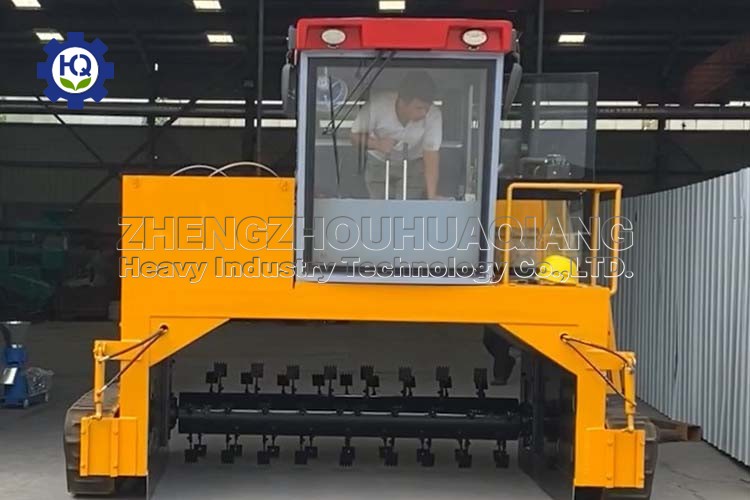The fermentation process is crucial in the production of organic fertilizers, and the double helix organic fertilizer turning machine has become a powerful assistant for optimizing fermentation efficiency with many significant advantages.
The strong material mixing ability of the double helix organic fertilizer turning machine is one of its outstanding advantages. It is equipped with two reverse rotating spiral shafts, and the spiral blades on the shafts can stir materials from different directions when rotating at high speed. One side of the spiral pushes the material towards the center, while the other side acts in the opposite direction. This unique operation allows the material to achieve all-round and deep mixing in a short period of time. Both large raw materials and various added microbial agents can be evenly distributed throughout the entire material pile, providing a balanced nutritional environment for microorganisms and greatly promoting the fermentation process.
Good ventilation and air permeability are also key advantages of this turning machine in assisting fermentation. During the flipping process, the spiral blades continuously lift and scatter the materials, making the originally compact pile fluffy and porous. This change increases the contact area between the material and air, allowing a large amount of fresh air to smoothly enter the interior of the material. Adequate oxygen supply meets the growth needs of aerobic microorganisms, which can more actively decompose organic matter in aerobic environments, accelerate fermentation reactions, and effectively shorten the fermentation cycle.
The double helix organic fertilizer turning machine performs well in temperature control. During the fermentation process, heat is generated, and if not adjusted in a timely manner, excessively high temperatures may inhibit microbial activity. This flipping machine continuously flips the material pile to dissipate the heat inside and avoid local overheating. At the same time, it fully mixes the low-temperature materials on the outer layer with the high-temperature materials on the inner layer, keeping the temperature of the entire material pile relatively uniform and suitable, creating a stable living environment for microorganisms, and ensuring the stable and efficient fermentation process
In addition, the flipping action of the double helix structure is relatively gentle and will not excessively damage the structure of the material. For some organic materials containing fiber components or with fragile texture, it is beneficial to maintain the integrity of the materials while ensuring sufficient stacking, which is conducive to retaining the beneficial components in the materials and improving the quality of the final organic fertilizer.
The double helix organic fertilizer turning machine, with its advantages in material mixing, ventilation, temperature control, and material protection, has comprehensively optimized the organic fertilizer fermentation process, laying a solid foundation for the production of high-quality organic fertilizers.






